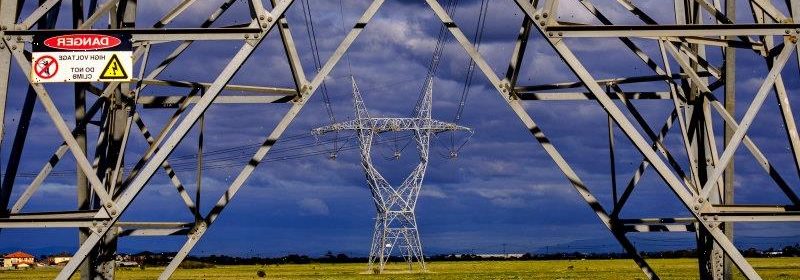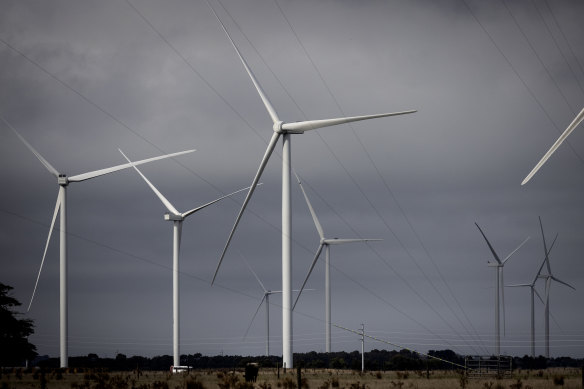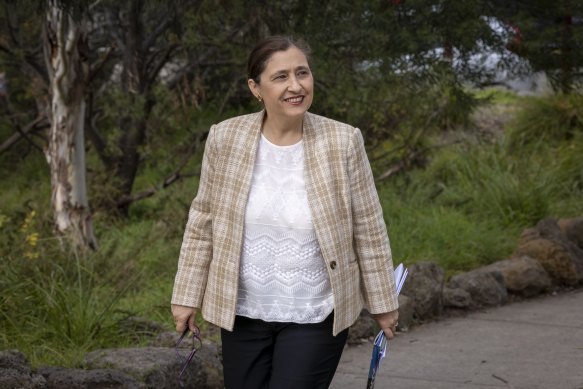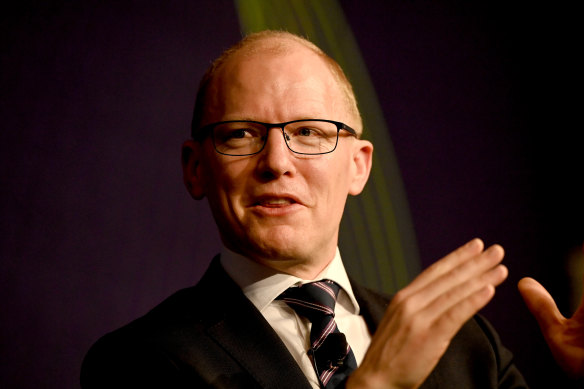Green light for KerangLink, Victoria’s massive renewable energy grid upgrade

Victoria is boosting plans to build hundreds of kilometres of new power lines as part of a push to share more electricity with NSW and increase renewable energy to offset the looming closure of the state’s three remaining brown coal-fired power plants.
Energy Minister Lily D’Ambrosio has given the energy grid operator the green light to start early planning work on the much-anticipated KerangLink interconnector, a high-capacity, high-voltage overhead transmission line running between Victoria and NSW.
A new interconnector will help Victoria and NSW share electricity and increase renewable energy.Credit:Nicole Cleary
The project, which is expected to cost about $3.3 billion, will link Victoria’s Western Renewables Link (potentially at a terminal just north of Ballarat) with a new interconnector at Dinawan, in the NSW Riverina region, via new stations near Bendigo and Kerang.
The new link will mean power stored by the Snowy 2.0 hydropower project in the Snowy Mountains can be siphoned to Victoria. In turn, power generated by Victoria’s new wind farms can be sent north, improving the reliability of the grid.
D’Ambrosio said the project, also known as VNI West, would unlock between 1900 and 5000 megawatts of renewable energy, and help strengthen Victoria’s electricity supply during periods of high demand, such as hot days.
“As ageing coal-fired generators retire and become increasingly unreliable, Victoria is enabling a once-in-a-generation transformation of our clean energy grid and delivering thousands of jobs along the way,” she said.
“Bringing forward VNI West means we can connect cheaper, more reliable renewable energy sooner, putting downward pressure on energy prices.”
The Andrews government is promising to be 65 per cent reliant on renewable energy by 2030 and 95 per cent by 2035, which would mark an end to Victoria’s century-long reliance on brown coal within the next decade.
But the push to ramp up renewable power follows growing alarm about the ability of the grid to cope with a surge in variable wind and solar energy, much of which is located in western Victoria, far from the state’s ageing and increasingly unreliable brown coal-fired generators.
The Australian Energy Market Operator (AEMO) has found that, based on new and existing projects, Victoria will face power reliability gaps as early as 2024, with minimum reliability standards expected to be breached in Victoria from 2028 onwards.
Environment Minister Lily D’Ambrosio.Credit:Wayne Taylor
D’Ambrosio said an order had been issued allowing the energy regulator to immediately start planning for the VNI West project, including a detailed engineering design, costings and community consultation, with an environmental assessment to start later this year, a year earlier than expected.
AEMO chief executive Daniel Westerman recently warned that without “social licence”, crucial electricity infrastructure might never get built.
“No one likes to feel railroaded,” he said.
“If we … don’t get this right, infrastructure will cost more, take longer to build, and ultimately may never be completed.”
Australian Energy Market Operator chief executive Daniel Westerman.Credit:Jeremy Piper
D’Ambrosio said the AEMO would also consider alternative options to minimise the impact of the KerangLink project on regional communities, including the connection point with Victoria’s Western Renewables Link.
In the lead-up to last year’s state election, the federal government announced the Commonwealth’s Clean Energy Finance Corporation would provide a concessional loan of $750 million to help build the KerangLink interconnector.
The Morning Edition newsletter is our guide to the day’s most important and interesting stories, analysis and insights. Sign up here.
Most Viewed in National
From our partners
Source: Read Full Article



